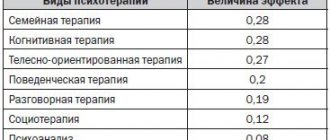Introduction
Autism spectrum disorders (ASD) are a group of different conditions.
They are characterized by certain difficulties with social interaction and communication. Other features include atypical patterns of action and behavior, such as difficulty moving from one activity to another, focusing on details, and unusual reactions to sensations. The abilities and needs of people with autism vary and may change over time. Some people with autism are able to live independently and productively, while others are severely impaired and require lifelong care and support. Autism often affects educational and employment opportunities. In addition, families providing care and support often have a difficult time. Community attitudes and the level of support provided by local and national authorities are important factors in determining the quality of life of people with autism.
Signs of autism can be identified in early childhood, but the condition is often diagnosed at much later stages.
Autism is often accompanied by other disorders, including epilepsy, depression, anxiety and attention-deficit hyperactive disorder, as well as disruptive behavior. People with autism often have co-occurring conditions, including epilepsy, depression, anxiety and attention deficit hyperactivity disorder, as well as sleep disorders and disruptive behaviors such as self-harm. The intellectual abilities of people with autism vary widely, from severe disabilities to high levels of intelligence.
Difficulty in identifying an ASD diagnosis
The diagnosis of ASD is difficult to identify, as it is often accompanied by other disorders. Among them are epileptic seizures, depressive disorders, hyperactive behavior (associated with attention deficit). The level of intelligence also varies significantly. This group includes mentally retarded children and children with good cognitive abilities. In differential diagnosis, researchers try to immediately exclude hearing impairment and specific deviations in speech development. The earlier and more accurately the diagnosis is made, the more effective the correction of the identified features.
SPD, speech delay, autism
We came in with a diagnosis of autism. We didn't go to the potty, didn't say a word, didn't pay attention to children and animals. A little over a month of rehabilitation and we are already playing with the children, peeing in the potty, drinking from a glass, eating from a fork, turning our heads when called. This is huge progress, this is a different child...
Causes
Based on available scientific evidence, there may be many factors that increase a child's likelihood of developing ASD, including environmental and genetic factors.
Available epidemiological data clearly indicate that there is no causal relationship between autism spectrum disorders and the measles, mumps and rubella vaccine. Previous studies suggesting such a causal relationship were found to have methodological flaws (2)(3).
Likewise, there is no evidence to suggest that any childhood vaccine increases the risk of autism spectrum disorder. Reviews of the evidence on the potential association between the preservative thiomersal and aluminum adjuvants contained in inactivated vaccines and the risk of ASD strongly suggest that vaccines do not increase the risk of ASD.
Patient assessment and management
A range of interventions, beginning in early childhood and throughout life, can promote optimal development, well-being and quality of life for people with autism. Timely, evidence-based psychosocial interventions early in life can improve the ability of children with autism to communicate and interact effectively with others. It is recommended that children's development be monitored as part of routine maternal and child health care.
It is important that children, adolescents and adults diagnosed with autism and their carers have access to relevant information, referrals and practical support that is tailored to their individual, evolving needs and preferences.
The health care needs of people with autism are complex and require comprehensive services, including health promotion, care and rehabilitation services. In this regard, cooperation with other sectors, in particular with the education system, employment and social sector, is important.
Interventions for people with autism and other developmental disabilities must be planned and implemented with the participation of the people affected. Care for people with autism must be supported by action at local and community levels to make physical and social environments and relationships more accessible, inclusive and supportive.
Human rights
All people, including those with autism, have the right to the highest attainable standard of physical and mental health.
However, people with autism often face stigma and discrimination: their rights are unfairly denied in health care and education, and their opportunities to participate in society are limited.
People with autism experience the same health problems as the general population. In addition, they may have special health care needs related to ASD and other related conditions. They may be more vulnerable to chronic noncommunicable diseases due to behavioral risk factors such as physical inactivity and poor diet, and are at greater risk of violence, injury and abuse.
People with autism, like the rest of the population, need accessible health services to meet their general health needs, including promotion and prevention services, as well as treatment of acute and chronic conditions. However, compared with the general population, people with autism have higher rates of unmet health care needs. These people are more vulnerable in humanitarian emergencies. The most common problem is that health care providers do not have sufficient knowledge about autism and do not have a good understanding of the condition.
Characteristics of children with autism (ASD)
- Violation of emotional contact in communication with other people. This feature of autism is associated with several mechanisms, namely:
- “Social agnosia” is a disorder in the perception of facial expressions and intonations of people. Although children with ASD do not have primary visual processing problems, they treat others more like objects and lack the ability to experience empathy. Studies have found that when recognizing human faces, areas in the autistic brain that are responsible for the perception of inanimate objects are activated, in contrast to healthy people.
- Violation of "central binding". Due to perceptual impairments, autistic people are good at “catching” various small details, but cannot “assemble” a complete picture. That is why they take everything literally, are unable to perceive the context, the appropriateness of behavior in a given situation, and do not understand the figurative meaning and body language.
- Disorder of one's own facial expressions, intonation of speech and expression. Even if a person with autism was able to perceive the emotions of another person (as a rule, they can feel basic emotions - anger, fear, joy), establishing adequate contact is complicated by the fact that the response on the part of the autistic person is complicated. This is due to dysfunction of the premotor areas of the cerebral cortex and fronto-limbic connections. As a result of these disorders, facial dyspraxia occurs (impaired voluntary control of facial expressions) and the generation of emotions. Facial and bodily expressions of emotions in such children are poor, unclear and inadequate in nature. Speech is mechanical (if it exists).
- Lack of the so-called “model of mind” (theory of mind). Autistic people have no difficulty understanding directly observed physical events, but are unable to imagine and understand what another person is feeling and wanting to do or to interpret their own actions and intentions. The fact is that these are phenomena of a higher representative order; they are abstract compared to physical objects. The model of mind relates not only to the awareness of thoughts, but also to the awareness of the body, and this, in turn, is based on the body schema (which comes from the early sensory experiences of the child). Since body schema and awareness are also impaired in people with ASD, physical contact with other people (touching, stroking, hugging) is similarly difficult. Autistic people most often do not feel the need for physical contact because they do not understand the communicative meaning of these actions. In addition, physical contact can be unpleasant and painful due to impaired sensory processing of tactile and proprioceptive (muscle, tendon) signals.
- Semantic-pragmatic speech disorder or lack thereof. More than half of autistic people either do not speak or speak very poorly. Many children with ASD have signs of developmental dysphasia (alalia in the Russian interpretation), but autism and dysphasia are by no means synonymous. Simply put, there is autism with dysphasia, but dysphasia without autism is common, and it is very important to distinguish between the two in practice. Recent studies have shown that the age at which a child begins to develop speech influences the severity of autism and the prognosis of when the child will develop fluent spoken language (Rühl D, Bölte S, Poustka F “Sprachentwicklung und Intelligenzniveau beim Autismus Der Nervenartzt" 72:535-40 (2001); Szatmari P, Bryson SE, Streiner DL ea "Two-year outcome of preschool children with autism or Asperger's syndrome. Am J Psychiat (2000) 157:1980 -87). Signs of semantic-pragmatic impairment in autism:
- Difficulties in presenting thoughts coherently (integrity, “central cohesion”, mentioned above);
- Inconsistency between the use of speech and the social context of the situation;
- Limitation in understanding speech patterns, sarcasm, irony and jokes, figurative meaning. Too literal understanding of speech.
- Speech does not serve for interaction and is egocentric.
- Intonation is incorrect, which makes speech mechanical. The speech of an autistic person gives the impression of being “pseudo-adult” and pedantic.
- Children very often have echolalia, including delayed echolalia, when the child can mechanically reproduce entire sentences and dialogues, for example, from cartoons. Also, autistic children tend to change the pronouns “I” - “You” or refer to themselves in the third person. They practically do not use pointing gestures.
- At the same time, verbal memory in a person with ASD can be very good, and articulation can be clear. This point in itself is not a violation, but all these points relate to the general syndrome of semantic-pragmatic speech disorder, describing it entirely.
- Additional symptoms that often accompany autism spectrum disorder. The symptoms listed below are very often identified with autism, but this is incorrect, they are not specific and can also occur with other disorders.
- Cognitive rigidity, impaired mobility of mental processes, switching. It is easy to notice that autistic people tend to get “stuck” on certain subjects, which are often not interesting to normotypical children. This feature is associated with dysfunction of the prefrontal cortex and cerebellum. Children with ASD often show resistance to any changes in their lives and environment. If something is disrupted in their usual routine, they become frightened to the point of panic.
- Stereotypical behavior. Autistic children can play with the same toy for hours and look at the same object. They can move monotonously (for example, run in circles, swing, open and close furniture doors), repeat the same words and expressions, and perform actions on their own body. On the one hand, such behavior contains sensory self-stimulation associated with sensory processing disorder (see point below). On the other hand, such repeated actions and rituals help the autistic person to structure reality in order to perceive it and perform cognitive processing.
- Sensory originality, namely hypo- or hypersensitivity to sensory input. Very often, when studying the processes of processing stimuli of various modalities, autistic people are diagnosed with the so-called sensory integration disorder. For diagnosis, both special tests and the evoked potential method (in different modalities) can be used. Such children may become hysterical at the sound of a blender or vacuum cleaner, eat inedible objects, exhibit food selectivity, be afraid of swings, or, conversely, swing on them for hours. To correct auditory hypo- or hypersensitivity, as well as in cases of impaired transmission of acoustic impulses to the cerebral cortex, our center successfully uses the Tomatis method, the effectiveness of which has been proven by many studies. In addition to immature processing of acoustic stimuli, children with ASD often exhibit difficulties in integrating proprioceptive, vestibular and tactile stimuli.
- Praxis disorder (dyspraxia) is a disorder of voluntary movements. It is directly related to sensory processing disorder, body schema disorders, and executive function disorders. In autism, various types of praxis are impaired, including kinesthetic, dynamic, constructive, and facial. According to some ASD researchers, dyspraxia is a mandatory feature in high-functioning autism (especially Asperger's syndrome). In practice, a violation of voluntary movements is manifested by awkwardness, difficulties in coordination, indecisiveness in movements, and inability to perform simple motor actions according to one’s age (throw and catch a ball, ride a bicycle, thread a needle).
- Violation of proxemia (degree of intimacy in social interaction). Autistic people do not have a sense of distance, so they can, for example, sniff a person or come too close than the social context allows. This behavior also occurs in other disorders, such as in children with ADHD. The other extreme is complete avoidance of contact, including tactile contact. This is just specific for children with ASD.
- Symbolic play, pretend play, with an imaginary object is either absent or very poorly developed in autistic children, which becomes obvious by the age of 18 months. The basis for symbolic play is visual representation, which suffers in autism. Therefore, the imagination develops dysfunctionally.
WHO Resolution on Autism Spectrum Disorders (WHA67.8)
In May 2014, the 67th World Health Assembly adopted a resolution on “Comprehensive and concerted efforts for the management of autism spectrum disorders”, which was supported by 60 countries.
This resolution calls on WHO to work with Member States and partner agencies to strengthen national capacity to address issues related to ASD and other developmental disabilities.
- World Health Assembly resolution WHA67.8: Comprehensive and concerted efforts to manage autism spectrum disorders
What is the advantage of a BRT neurorehabilitation center?
Our center uses international practices and original methods of autism therapy. Among them are already proven techniques:
- Imperative-corrective gymnastics. The procedure is aimed at harmonizing the muscle-joint balance and normalizing the functioning of the musculoskeletal system. This form of therapy falls under the category of structural rehabilitation. Myofascial release corrects skeletal muscle immobility, eliminates discomfort, and stimulates the muscle stretch reflex. ICG improves blood circulation, increases oxygenation, and promotes the evacuation of toxins from the body. All this explains the improvement in motor and neurological functions in children with ASD.
- Feldenkrais method. During classes with children, differentiation of movements and sensations of their own body improves. The child learns to feel himself and his location in space. This method is effective in correcting sensory problems that cause acute stress for the child with ASD and his family members.
- Neuropsychological assessment. It is carried out to better understand the strengths of a particular child’s personality and the problems that interfere with his harmonious development. Testing reveals information about the causes of behavior and provides the basis for developing an individual treatment plan.
The BRT Clinic employs well-known professors and specialists in the field of neurology and neuropsychology. Your contact with us is the beginning of successful relief from diagnoses that worsen your quality of life.
WHO activities
WHO and its partners recognize the need to strengthen countries' capacity to promote optimal health and well-being for all people with autism.
WHO is making efforts to
- encourage governments to take targeted action to improve the quality of life of people with autism;
- provide advice on policies and action plans to address autism in the broader context of physical and mental health and disability services;
- help improve the capacity of health care providers and providers to provide appropriate and effective care for people with autism; And
- promote the creation of favorable conditions for the lives of people with autism and other developmental disorders and for their participation in society.









